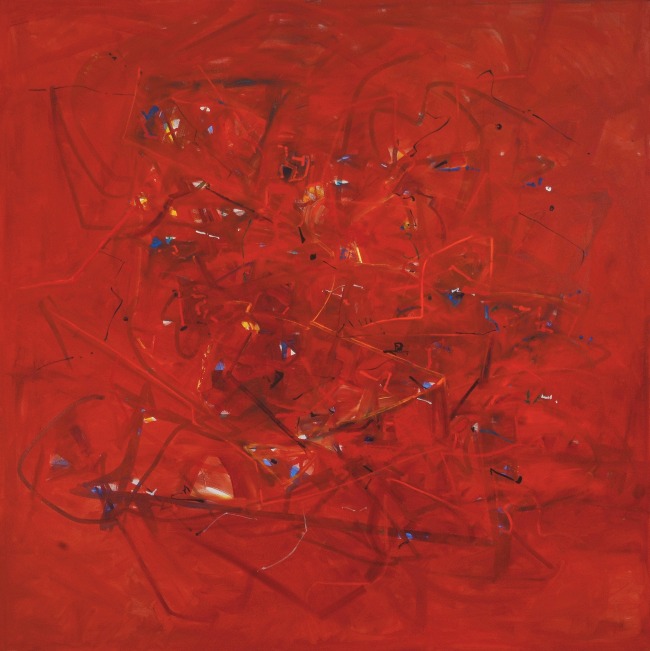William Christenberry, co-curator

Vision in Red, Acrylic on canvas, 4 x 4 ft.
Equilibrium
When Helen Frederick asked me to curate this exhibition of Michael Gross’s art, I accepted with pleasure. I have watched Michael pursue his art for thirty-five years. From the start, he had a certain way of making marks as well as a unique method of working. With all his exposure to the work of other artists, both colleagues and the masters, he has maintained his distinctive way of seeing things.
While he has continued to develop and mature over these many years, these new works of his—monochromatics—especially the black paintings, are another big step forward on his artistic journey. The pieces are monochromatic but, at the same time, they are also filled with subtle variations of mark-making and accent colors. Like all of Michael’s work, there is a large field of energy spreading out from the center which goes beyond the two-dimensional surface. Viewing this space is an engaging activity that also brings us to a state of equilibrium.
Michael is a landscape artist, getting his sources both from real life and his inner soul. He is a master of the realization of what is on the two-dimensional plane. He has never had difficulty in breaking up space and arranging parts in a dynamic and visually exciting way. He has been remarkably consistent in these efforts. He has also sharpened his instinctive ability to master the most difficult of all tasks for an artist: he knows when to stop. No one can teach this ability. It comes only from experience and failure and redemption.
When I considered the size of the Edison Place Gallery, I realized that the space offers a special opportunity to show Michael’s new works in context with his earlier ones. Looking over the whole body of work, there can be no doubt about its consistency of vision. His efforts show what can happen when a person has a distinctive way of seeing and an innate ability to present it visually. This requires focus over the long term. Michael started with an ability to make lines that remind me of Arshile Gorky and a willingness to make art that involves constant risk-taking. He has explored this vision, exploiting it as he goes and always pushing it further. He is doing it now more strongly than ever.